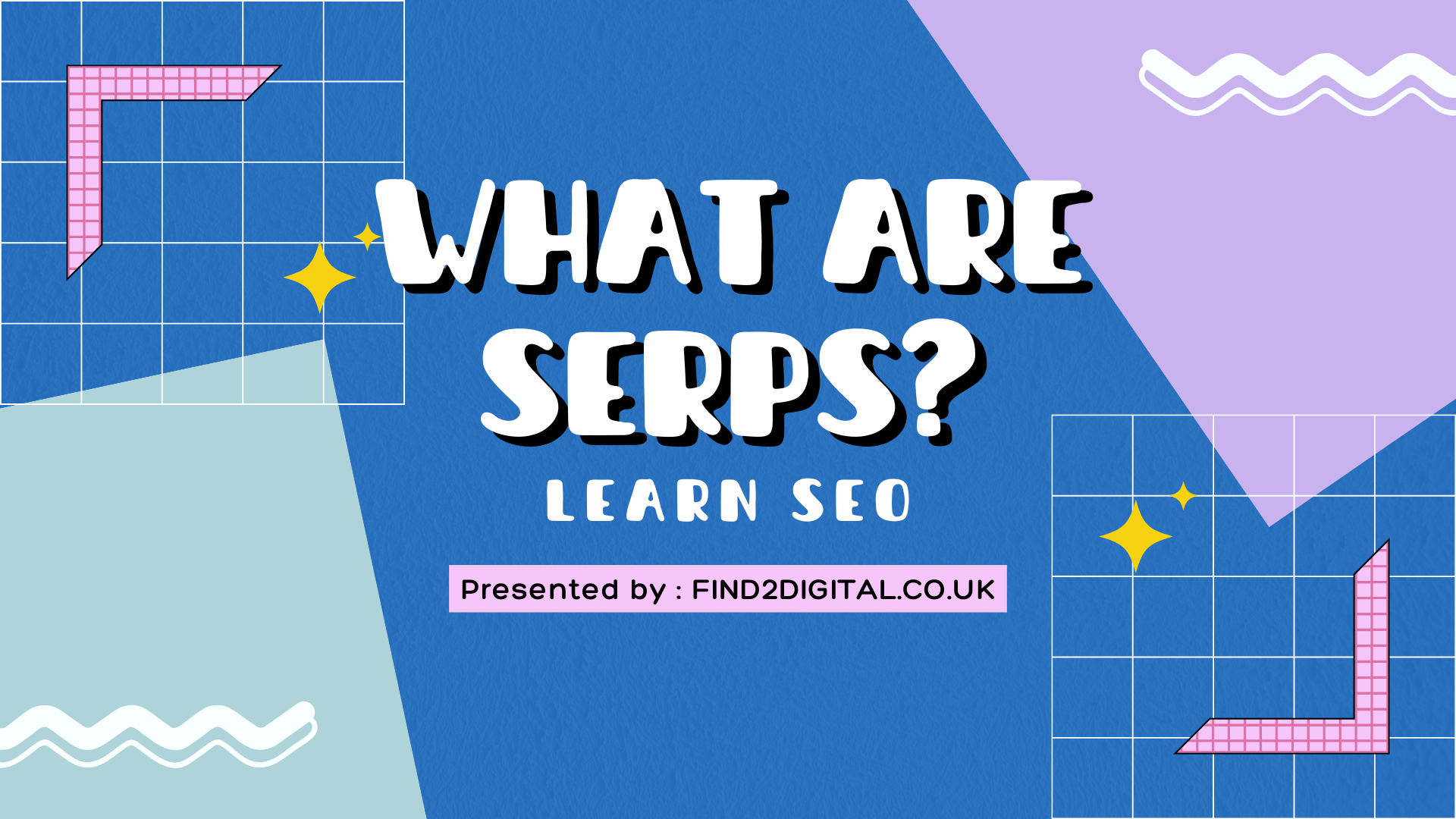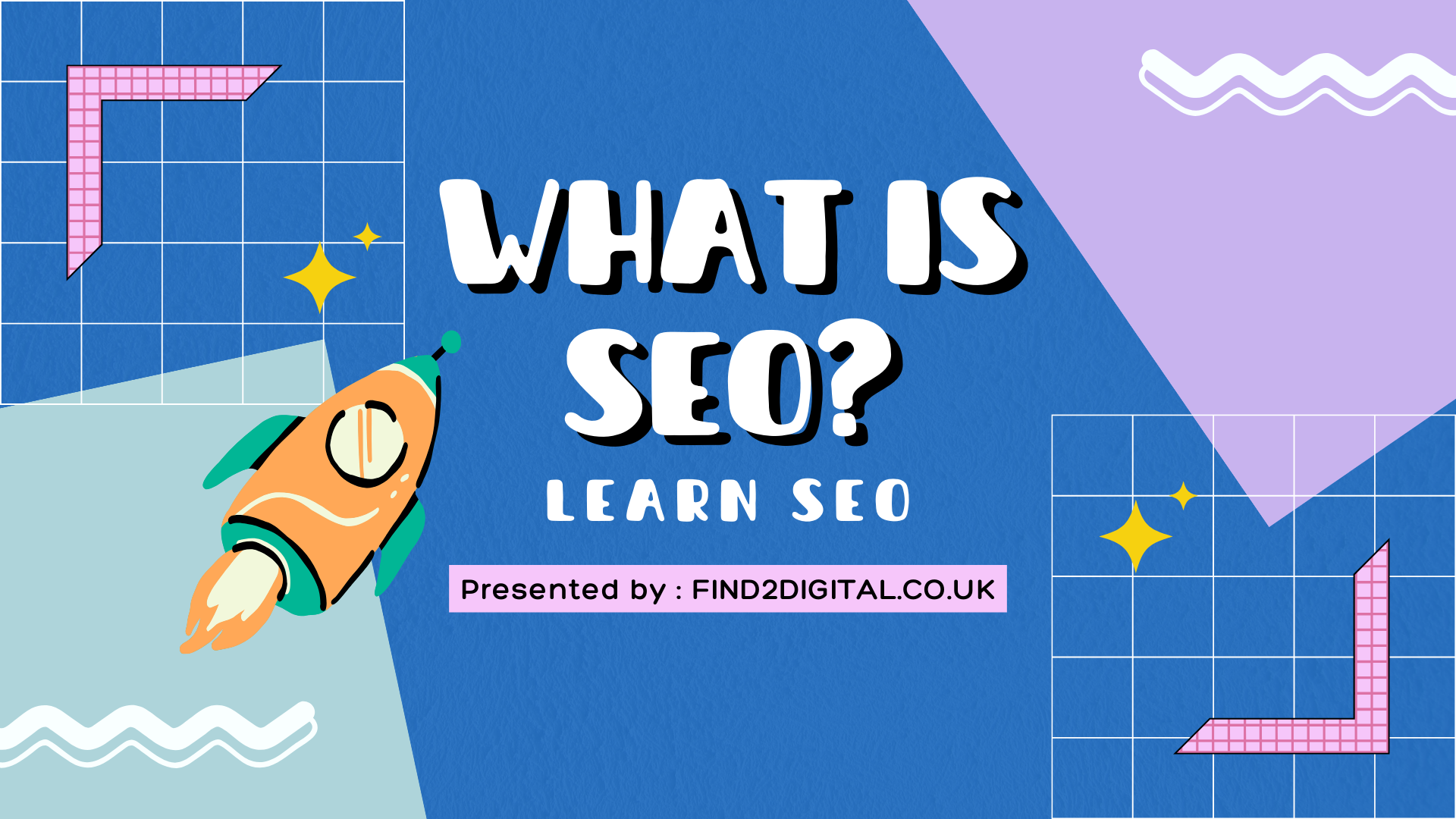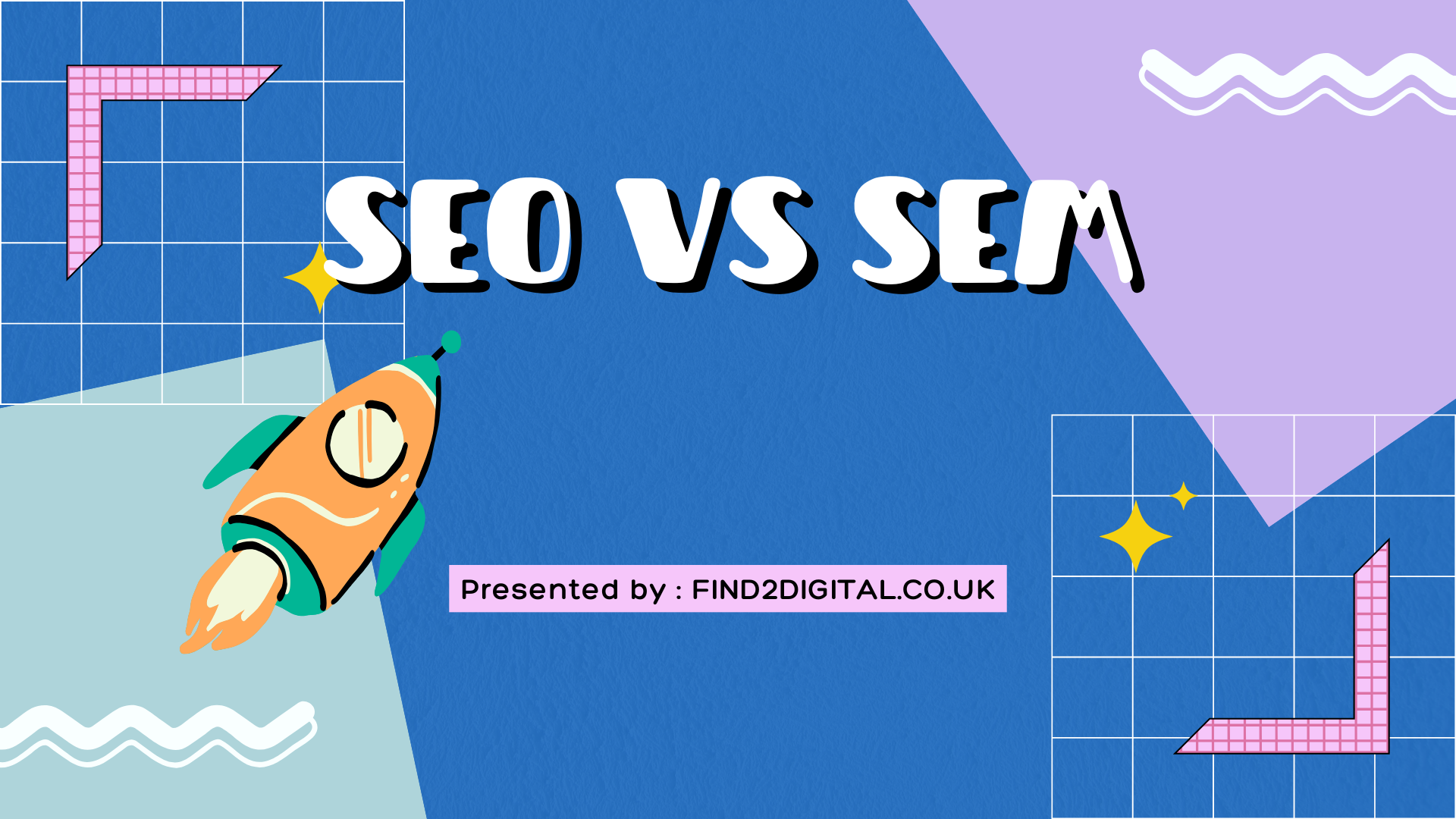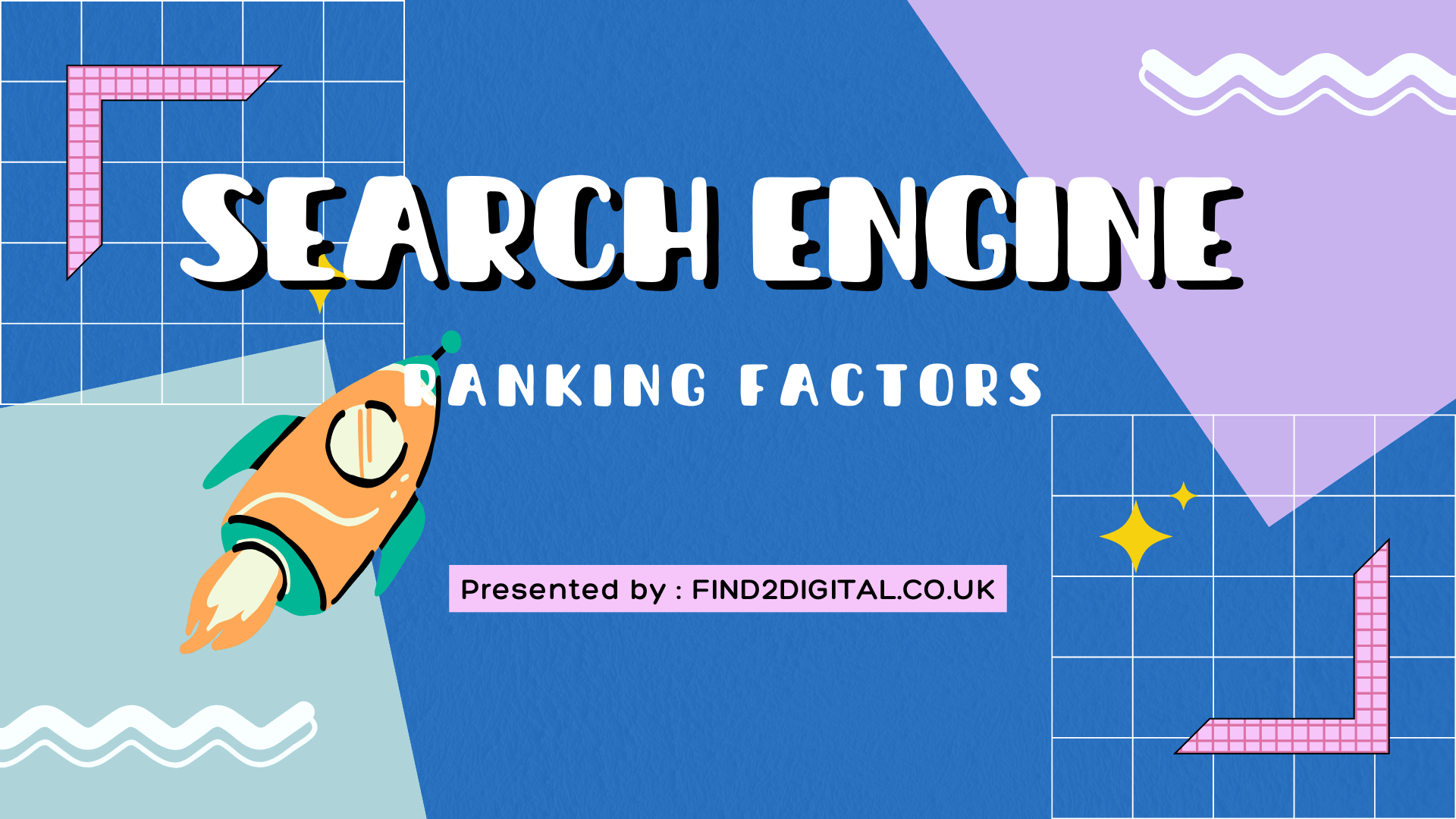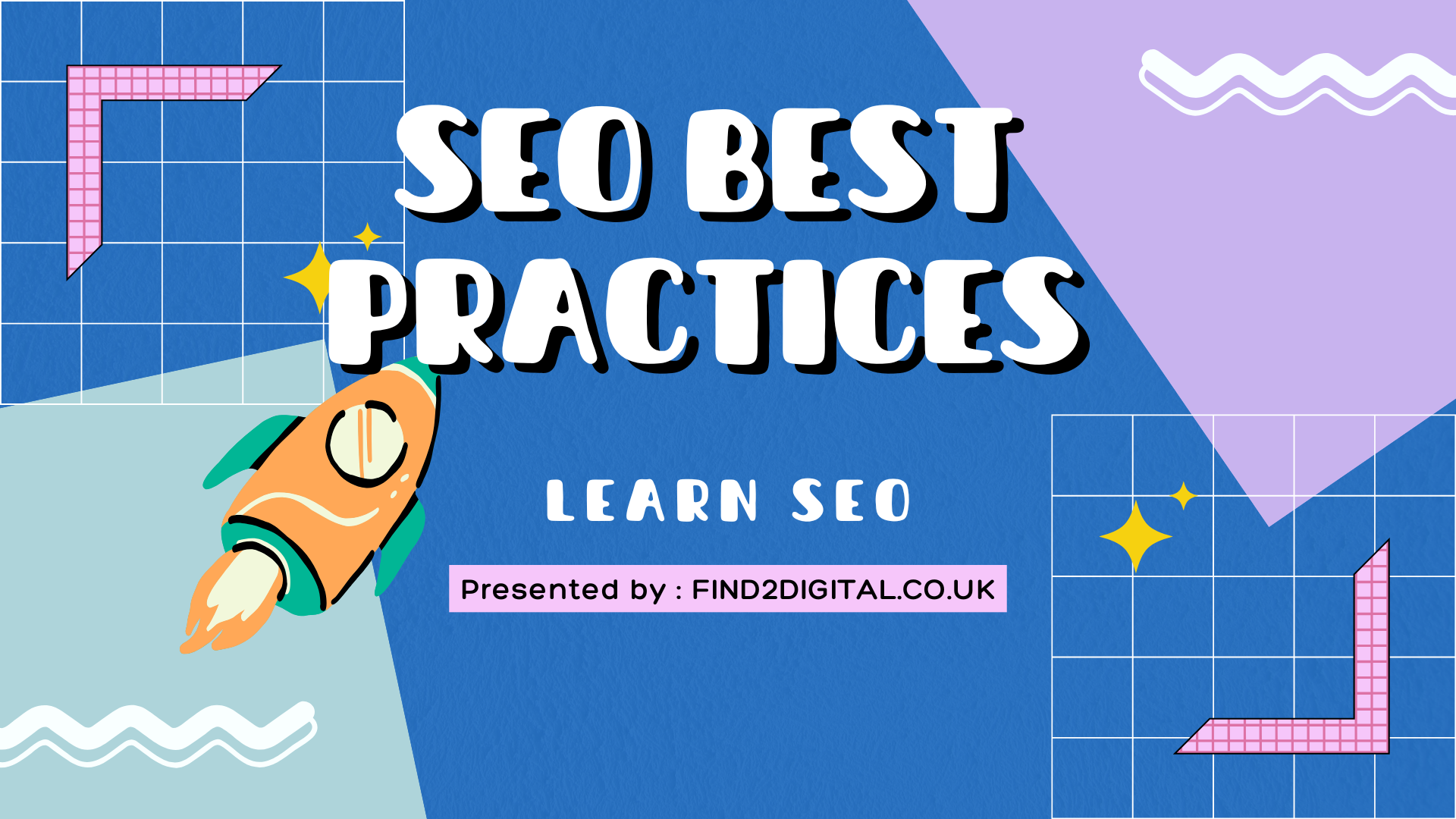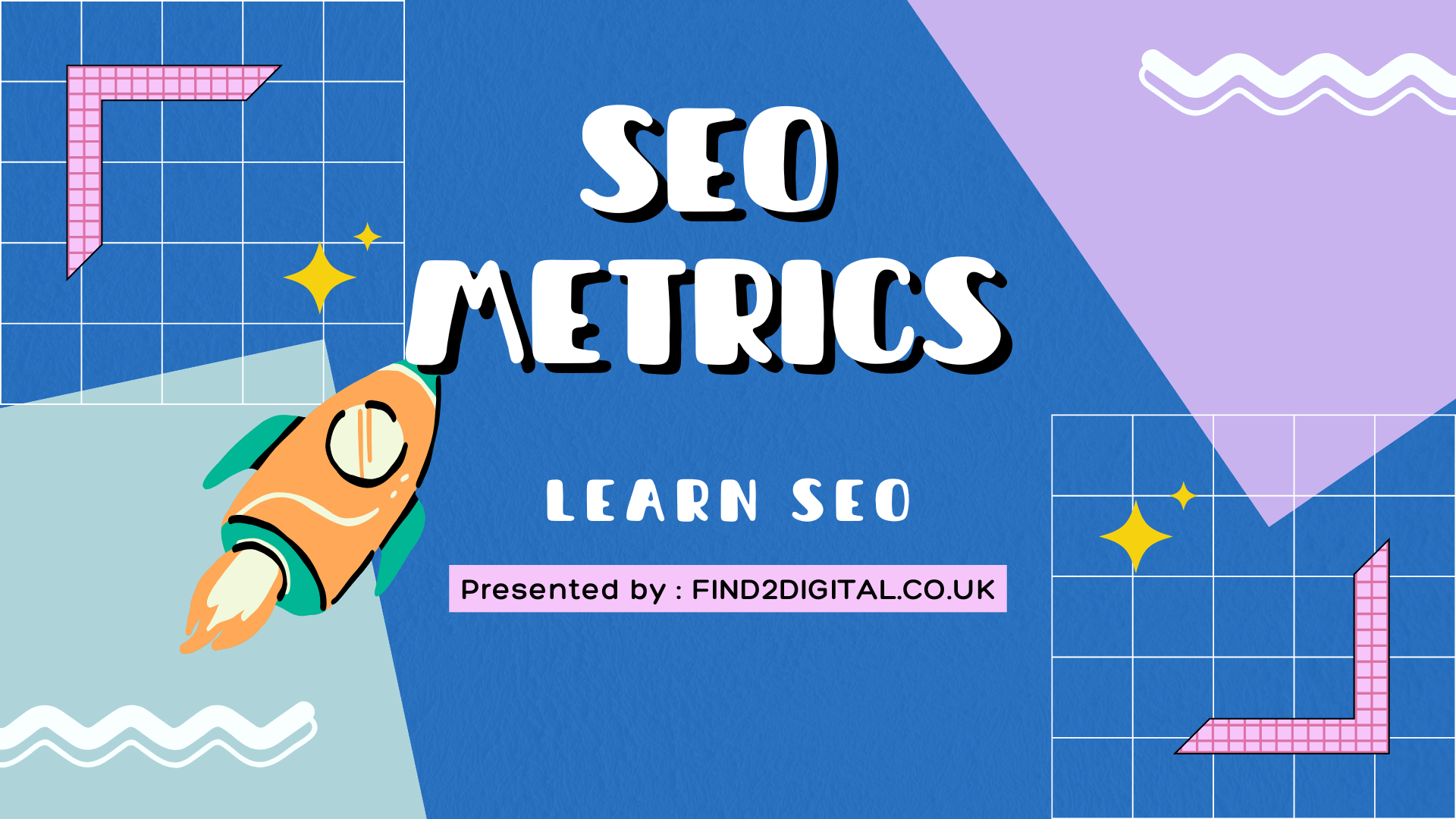What Are SERPs?
Search Engine Results Pages (also known as “SERPs” or “SERP”) are Google’s response to a user’s search query. SERPs tend to include organic search results, paid Google Ads results, Featured Snippets, Knowledge Graphs and video results.
In other words:
You type (or say) something to Google. And the SERP is what you get back.
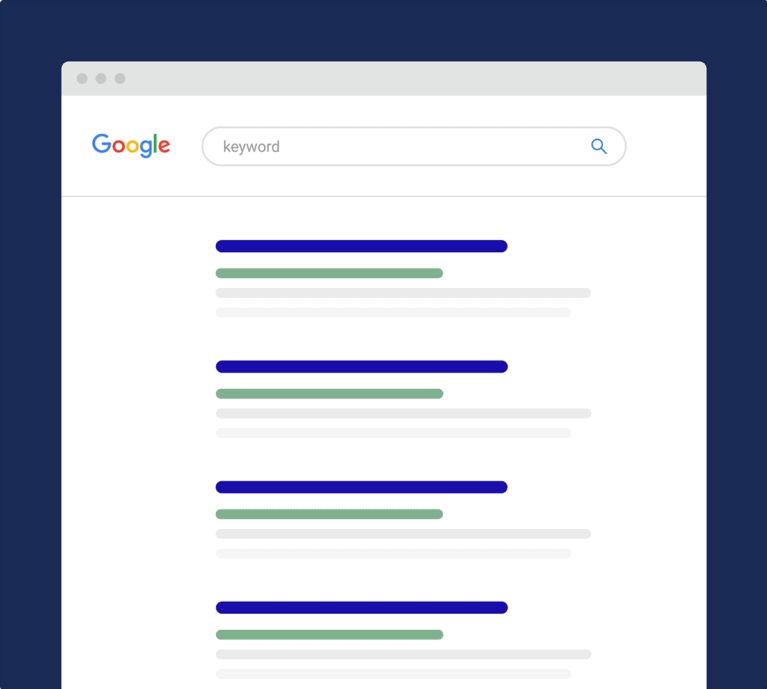
Even though Google now has dozens of SERP features that appear on the first page, the two most important categories are paid results and organic results.
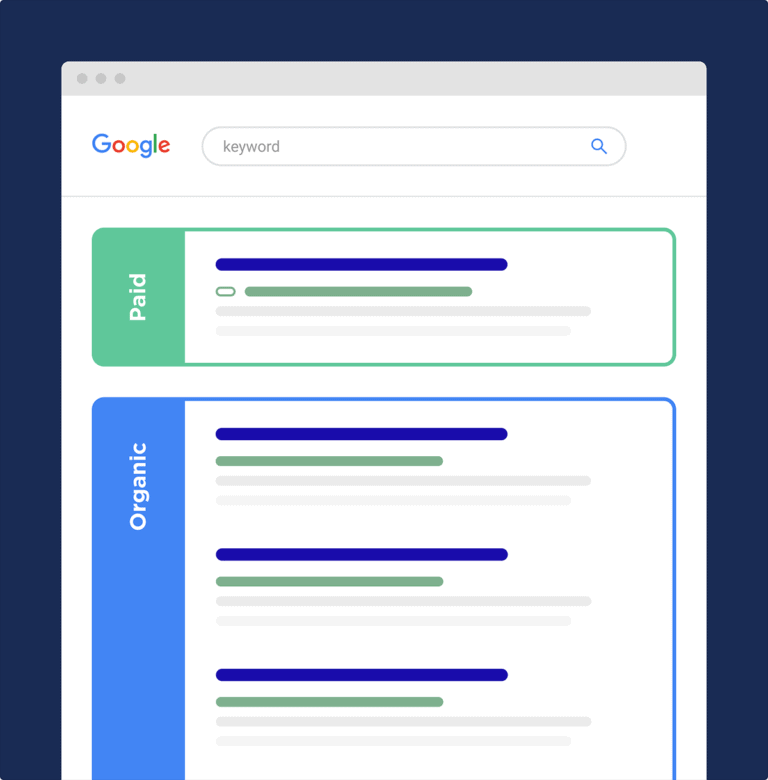
The paid results are from advertisers bidding on keywords via Google Ads. Although Google Ads take ad relevancy into account, their placement essentially goes to the highest bidder.
The organic results are “earned” placements that are determined by Google’s algorithm to be the overall best, most relevant results for a given search.
Why Are SERPs Important for Search Engine Optimization (SEO)?
The SERPs determine how your site appears on Google’s first page.
For example, let’s say you rank your site on the first page of Google for the keyword “how to start a website”.
That’s great… until you see that SERP features push the #1 result to well below the fold.
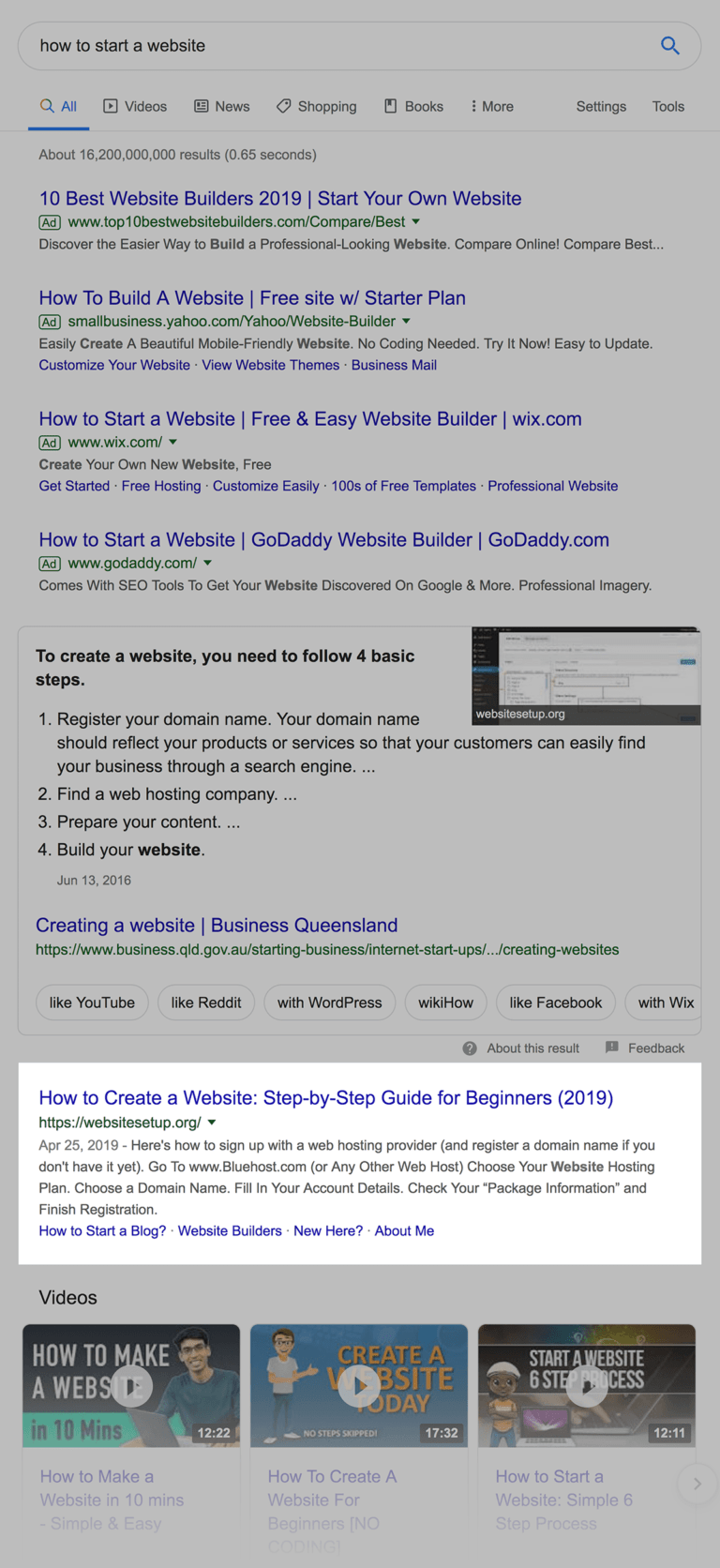
Which means that, even if you crack page 1, you probably aren’t going to get many clicks.
On the other hand, the SERP for “link building” is much less busy.
It’s basically 10 blue links. Which means that your organic result has a good chance of getting clicked on.
There’s also another important factor to keep in mind when it comes to evaluating the SERPs: “no-click searches”.
According to Sparktoro, there are more “no-click searches” than ever before.
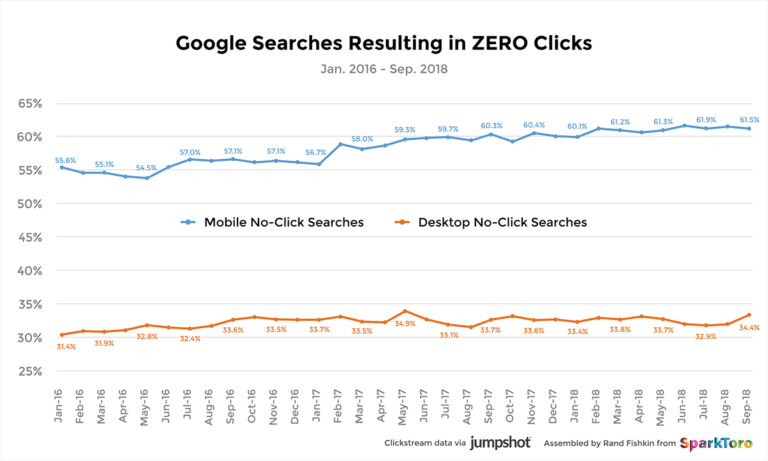
And these no-click searches are largely due to SERP features (especially Featured Snippets).
For example, let’s say you search for “when did Google start”.
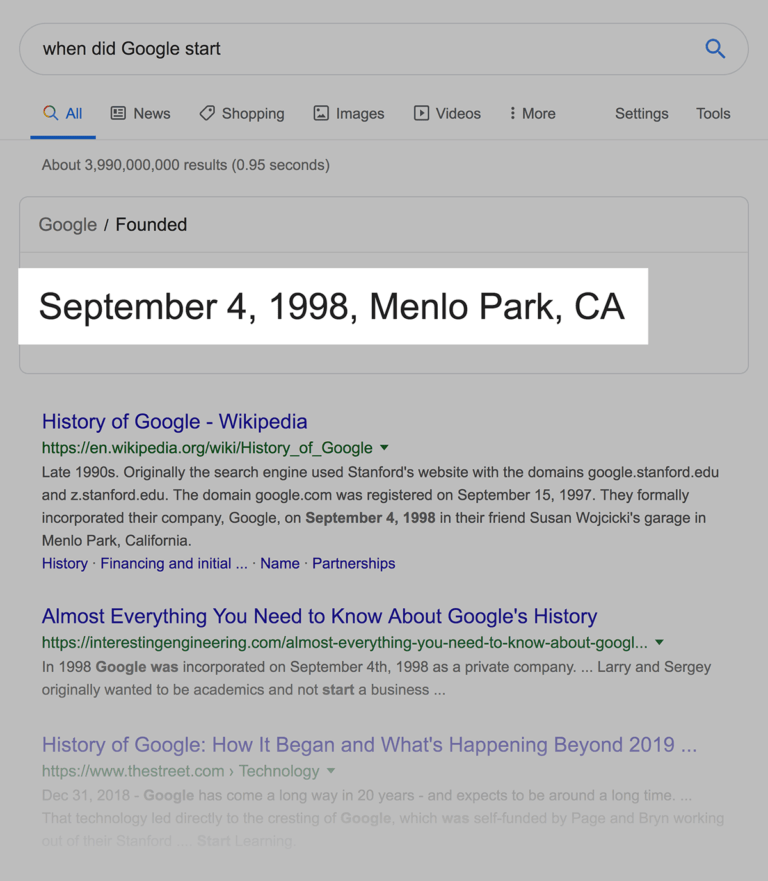
Why would you click on any of the 10 blue links in the search results when you get your answer right there on the first page?
That’s why you want to target keywords that don’t have a ton of SERP features. That way, your result will stand out and get clicked on
With that, here are the elements of a typical Google SERP:
Organic Search Results
The organic results are determined by Google’s complex algorithm (which has 200+ ranking signals).
Even though Google’s algorithm is top secret, they have publicly confirmed a few key ranking factors, including:
- Off-page SEO signals (the number of websites linking to a specific page. Also known as “backlinks”)
- On-page SEO signals (the keywords you use on your page)
- Site loading speed
- Brand presence and trust signals
A standard organic search result snippet includes:
- Page title (title tag)
- Page URL
- Meta description
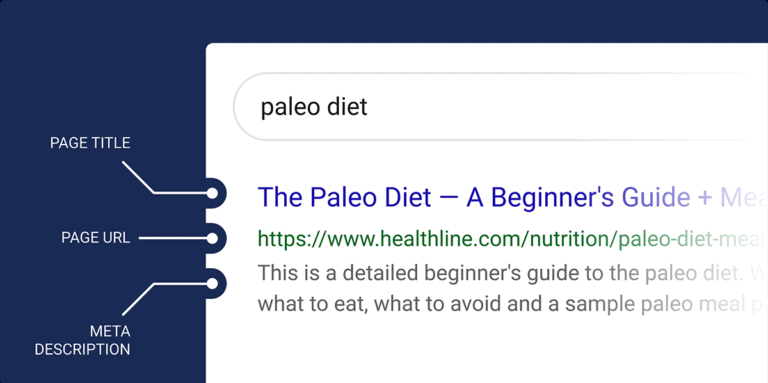
Google sometimes adds features to specific organic snippets.
For example, if they consider a page’s published date important they’ll show that:
Or, for certain results, they’ll show “sitelinks” below the result.
Sitelinks link to sections of a page. Or to related pages on the same website.
And, when Schema is used on a page, Google will sometimes add review stars, images, and event info that turn a normal result into a “Rich Snippet”.
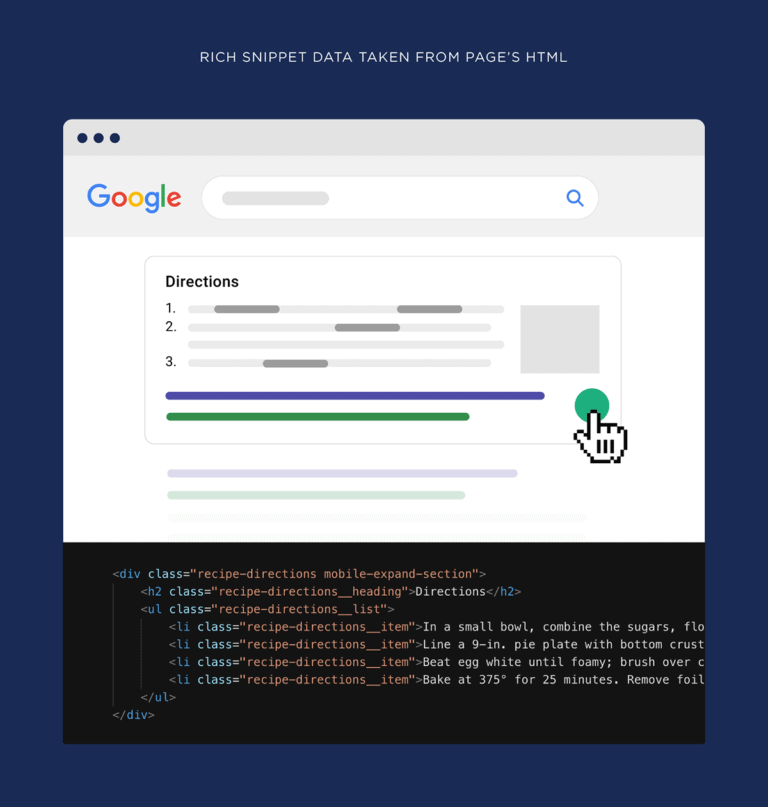
Paid Search Results
Paid search results are marked with a small “Ad” icon in the top left corner of their snippet.
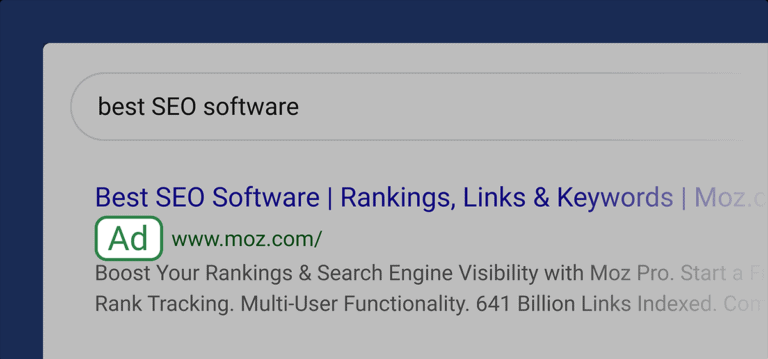
According to Rank Ranger, ads appear on 51.61% of page one SERPs.
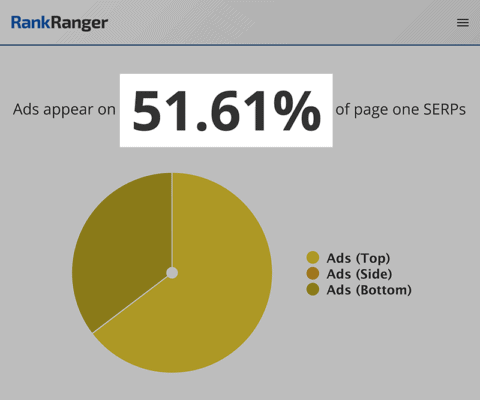
And when ads do appear, there’s an average of 3.10 ads per page.
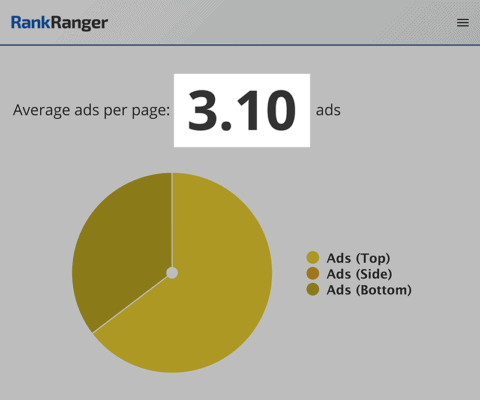
And for really competitive, high-value search terms, Google will put ads at the bottom of the SERPs too.
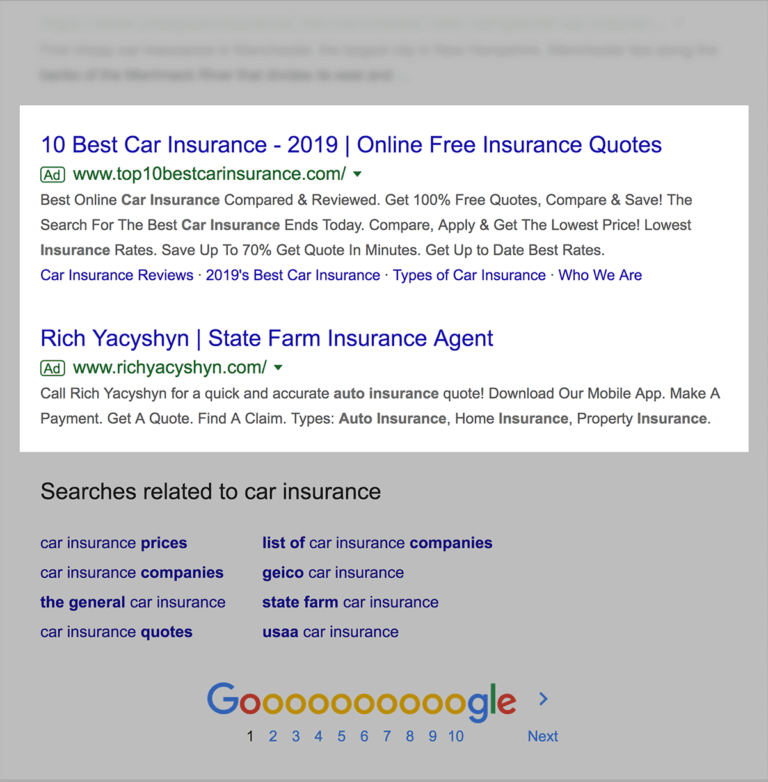
Because ads appear at the top and bottom of the page, they can crowd out the organic results.
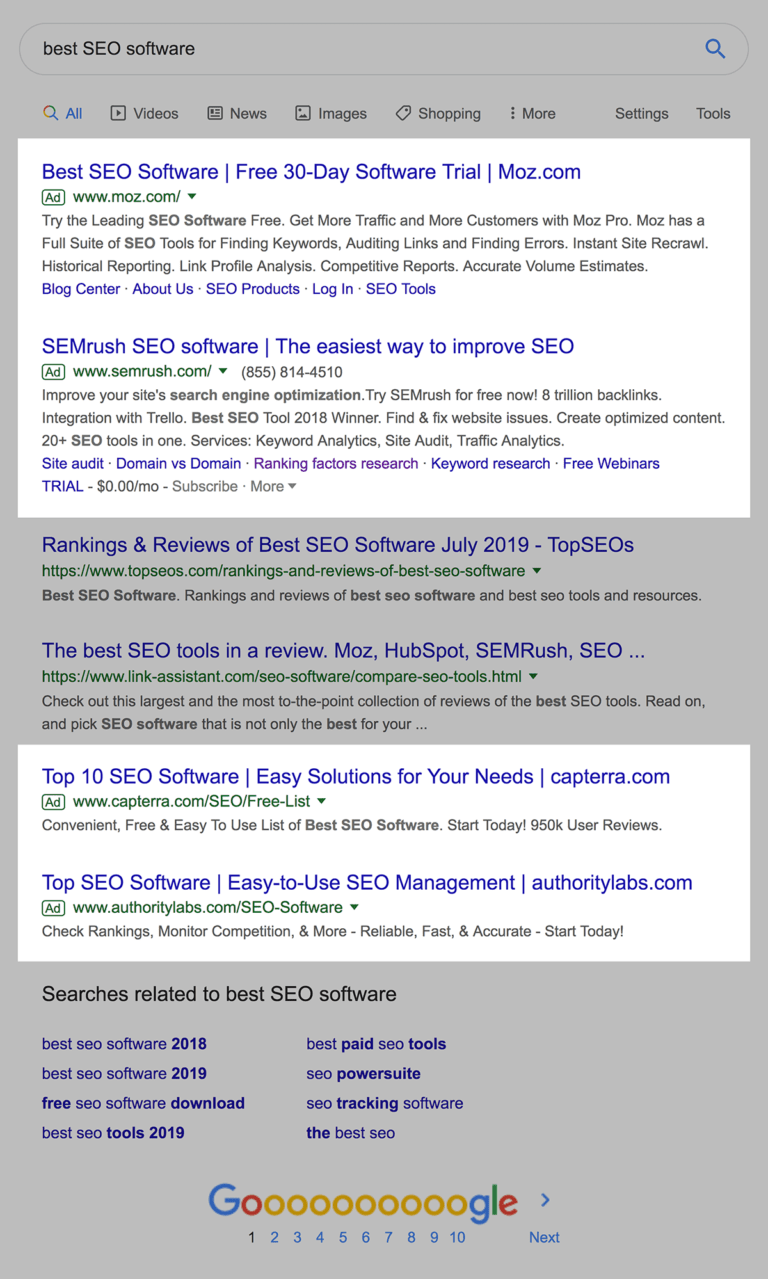
That said: I don’t recommend avoiding keywords that have lots of ads. Even though the ads will likely reduce your CTR, the fact that people are bidding on these terms show that the traffic is valuable.
In fact, I usually specifically target terms with lots of ads and a high “commercial intent”. Sure, I may not get as many clicks. But the clicks that I do get are that much more valuable.
Featured Snippets
Featured Snippets are a short section of content pulled from a webpage or video.
Here’s an example:
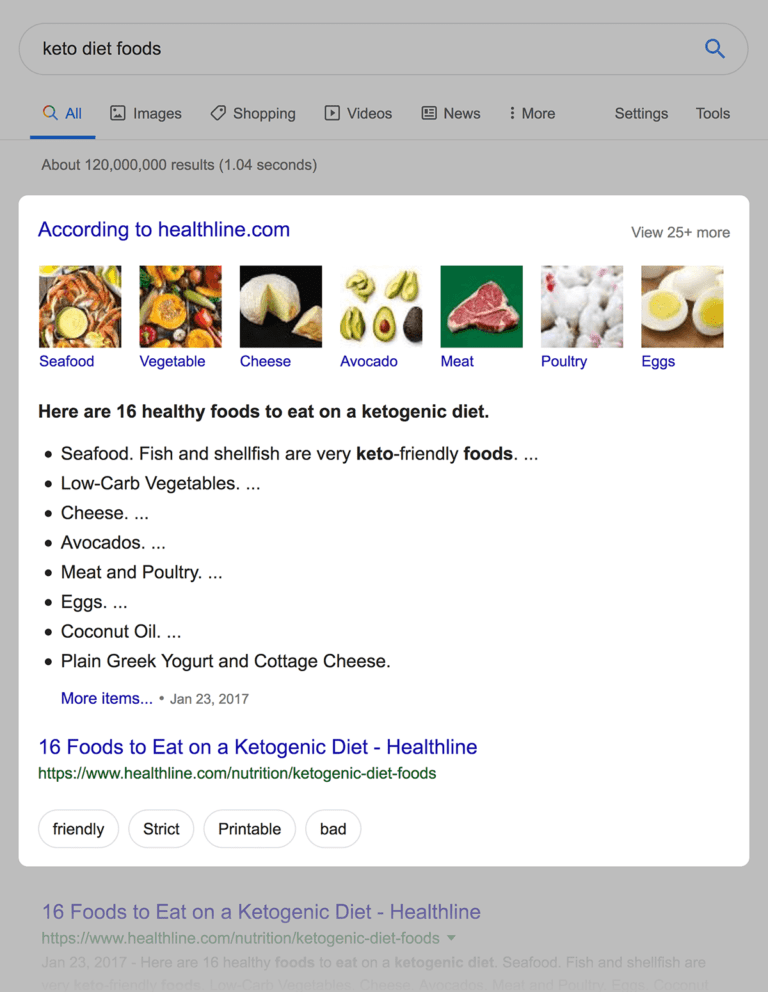
According to an industry study by Ahrefs, 12% of all SERPs have a Featured Snippet.
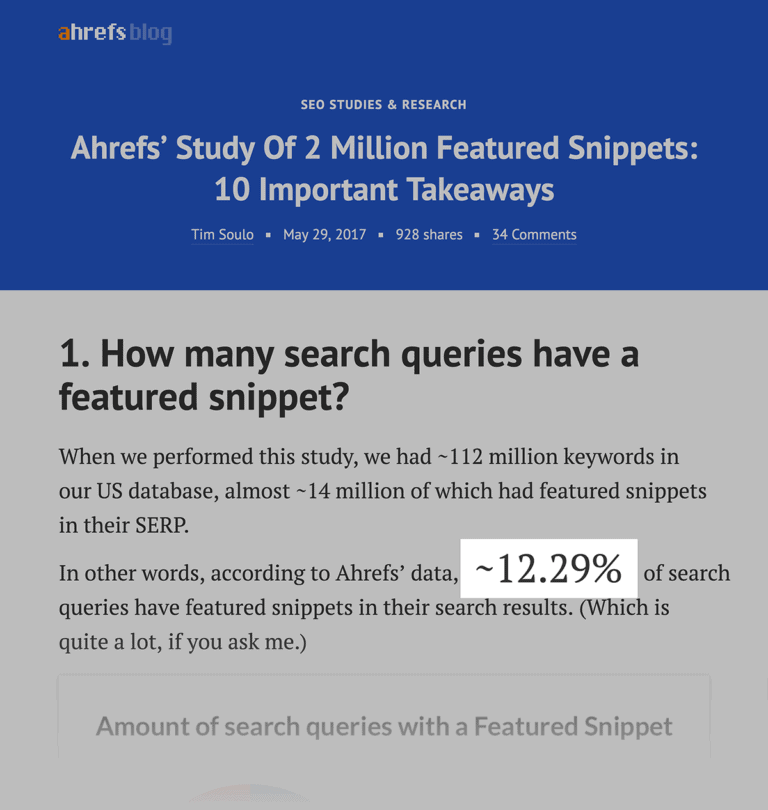
Common types of Featured Snippets include:
- FAQ: A short paragraph in response to “What is” and “Who is” types of searches
- Bulleted List: For rankings and “best of” lists
- Numbered List: Used for instructions, DIY, recipes, ordered tasks
- Tables: a visual display of dates, prices, rates… or any data presented in a table
Although most Featured Snippets contain text…

….Google has started to add “Video Featured Snippets” to the results.
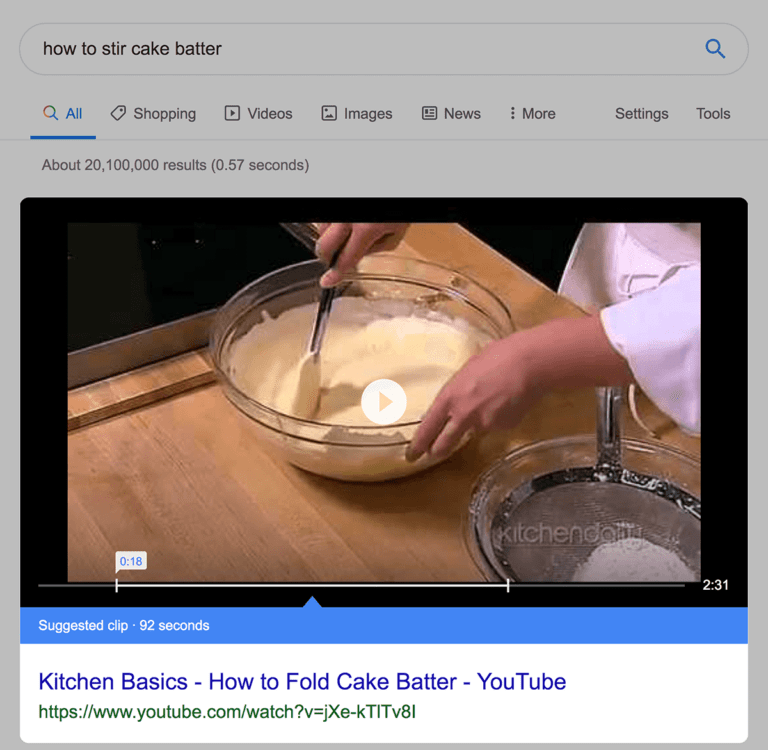
Featured Snippets are both a threat and an opportunity.
Featured Snippets are a threat because they almost always show up at the very top of the SERPs. Which pushes the organic results down the page.
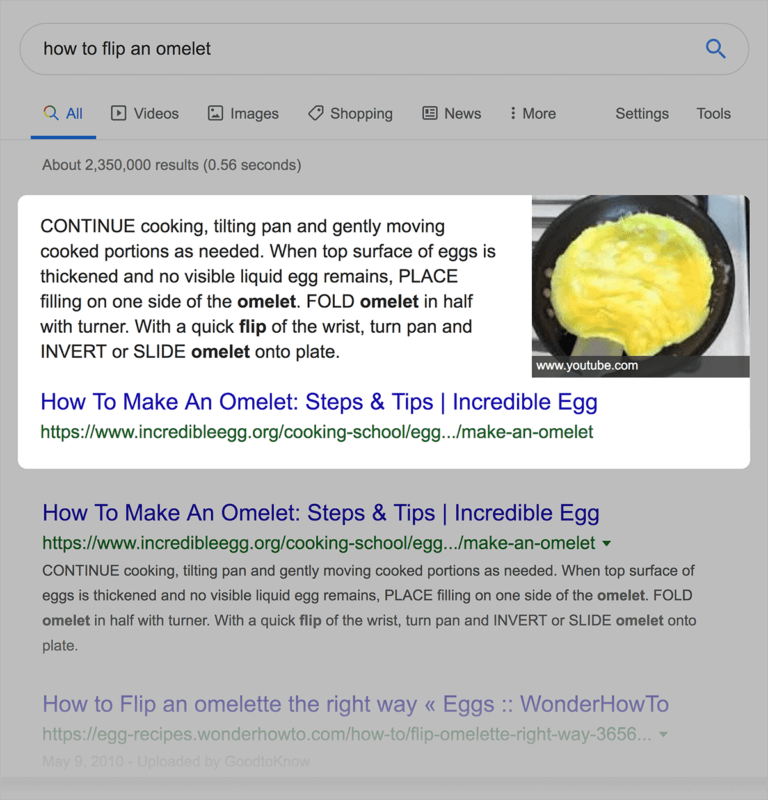
In fact, Featured Snippets appear so high on Google’s first page that many people refer to the Featured Snippet spot as “Position #0”.
Featured Snippets are an opportunity because YOUR content can show up inside of a Featured Snippet.
And when it does, you can find yourself with a super high organic CTR.
For example, my site currently ranks in the Featured Snippet box for “link building tools”.
And, according to the Google Search Console, it’s one of the main reasons that my CTR is 8.3%.
Direct Answer Box
18% of search results have “Direct Answers”, which are a direct answer to a specific question.
Here’s an example:
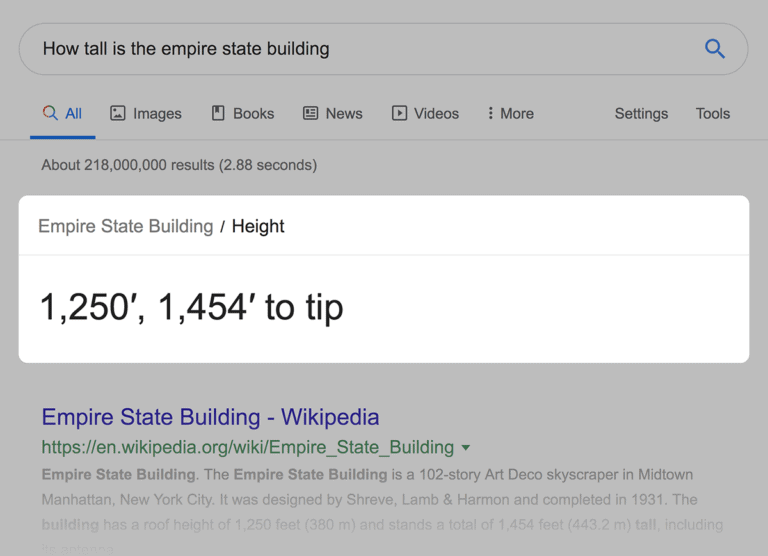
The answers that Google spits out are considered public domain. So, unlike a Featured Snippet, they don’t credit a source or link to the answer.
Knowledge Graph and Knowledge Panel
Knowledge Graphs and panels usually show up on the right side of the organic results.
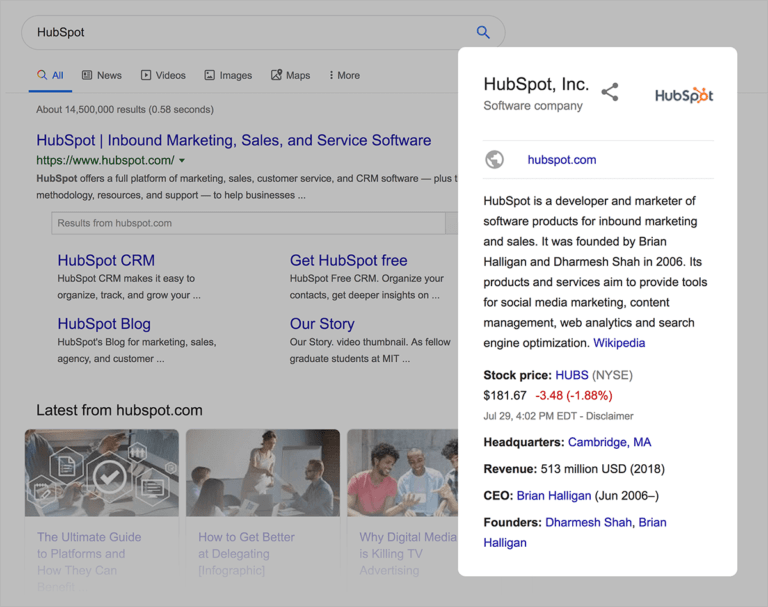
They’re basically “baseball card” stats for a company or important person.
Most of this data is scraped from hand-picked sources (like Wikipedia and Crunchbase).
Local Packs
Local Packs show up for local searches, like “comic book store Boston” and “comic book store near me”.
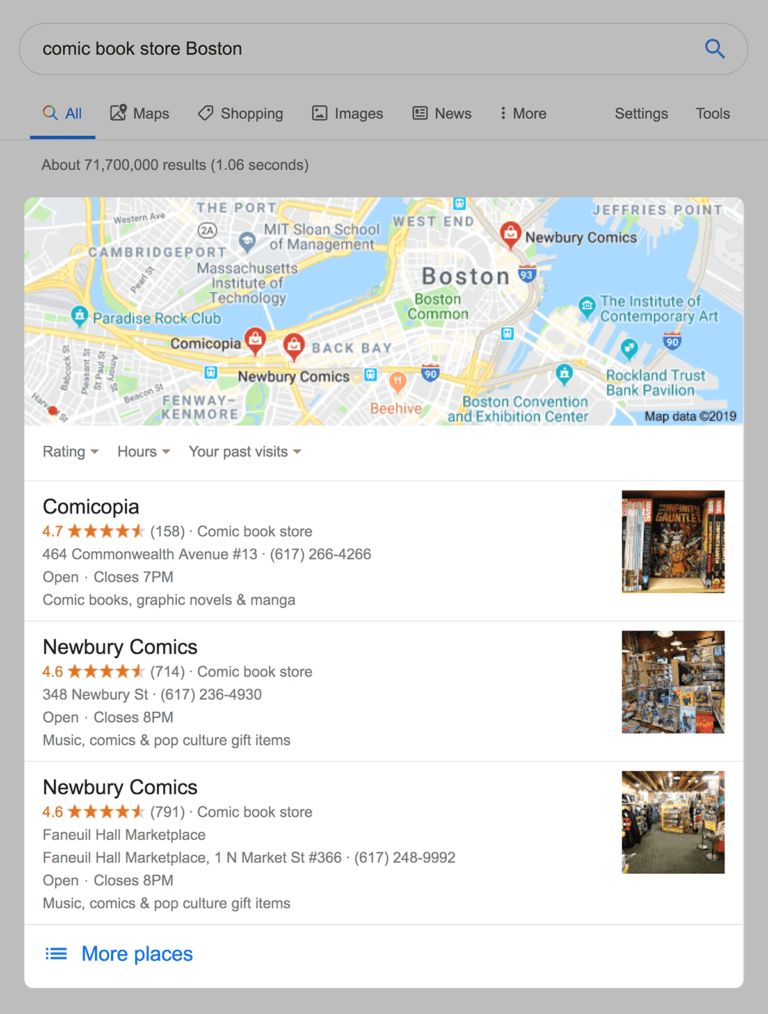
They can also appear when Google feels that a “normal” search needs a few local results. For example, if you search for “plumber”, Google knows that you’re probably looking for a plumber nearby.
Google Image Results
Google will feature results from Google Images for keywords where images make sense, like “cute cats” or “blue cars”.
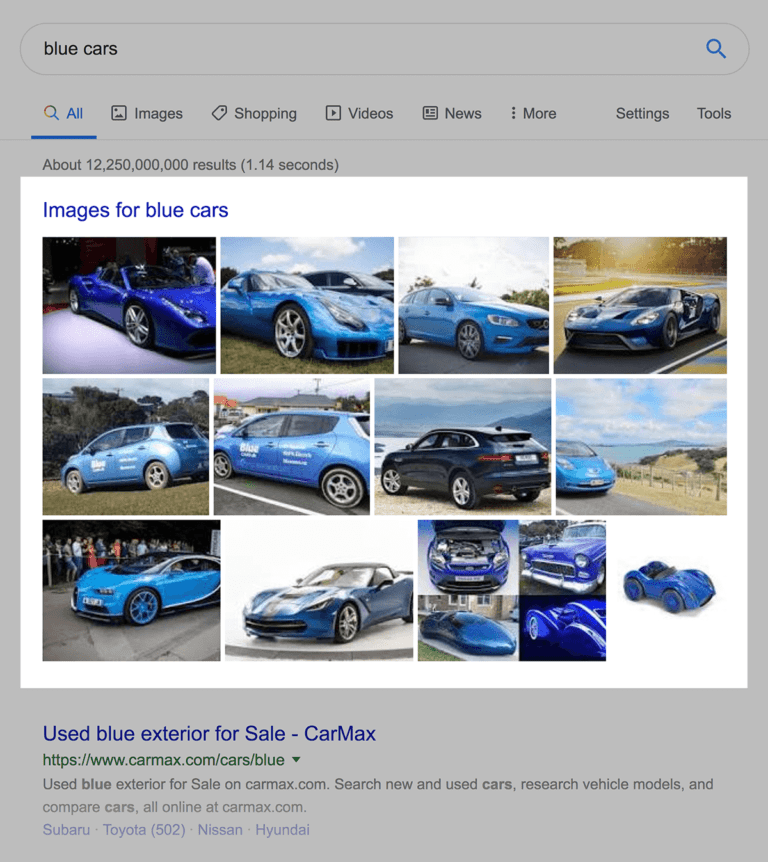
Video Results
These usually show up as a pack of 3 videos… with a carousel to see more.
88% of video results are pulled from YouTube.
It’s not known exactly how Google decides which results should have a video. But it’s likely based partly on the keyword itself and their own split testing.
For example, someone searching for “how to paint a garage” probably wants to see a video. Which is why Google shows a video carousel for that term.
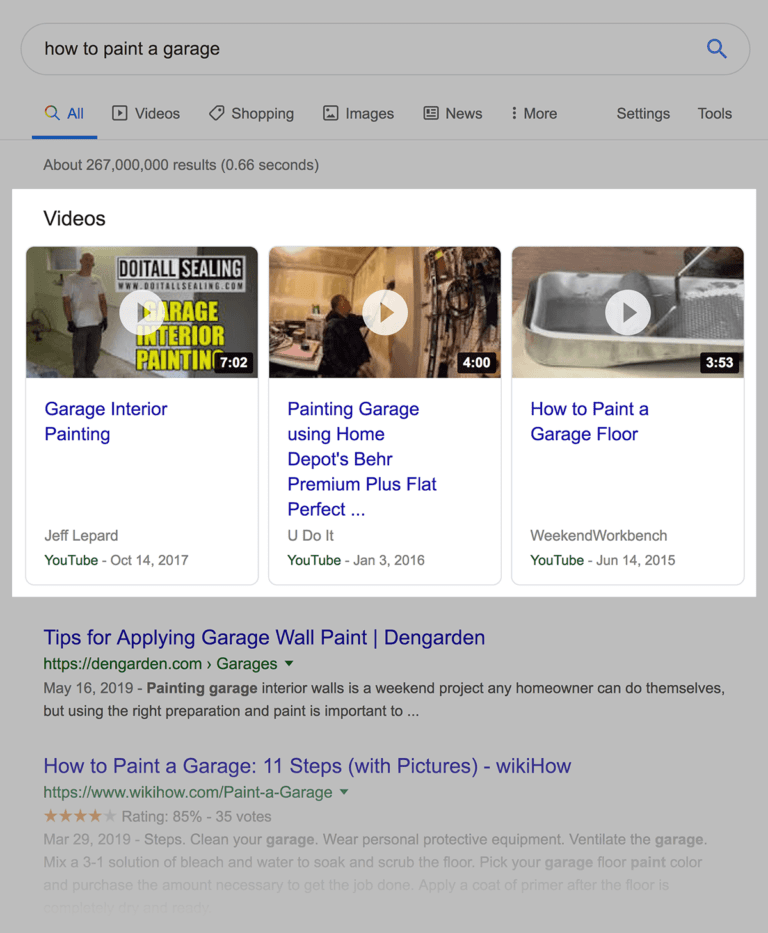
People Also Ask
This is a new-ish feature that Google usually inserts in the middle of the SERP.
And when you click on one, it expands out with an answer to that question.
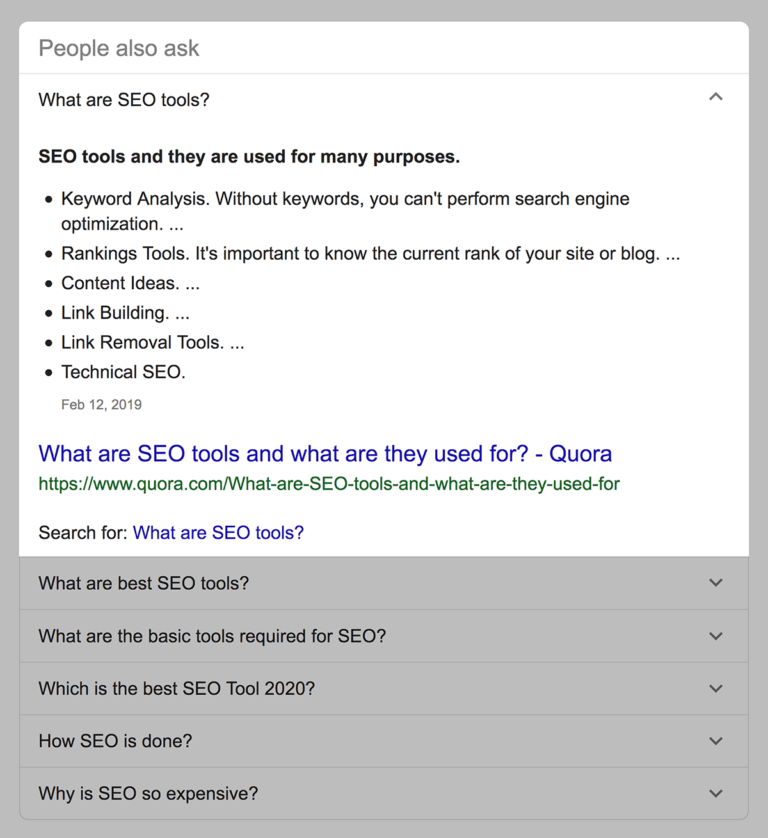
According to Moz, 58% of Google’s results contain a People Also Ask SERP feature.
Pro Tip: The People Also Ask section is GREAT for content topic ideas.
For example, when you search for “keyword research”, you get a list of these questions related to that term.
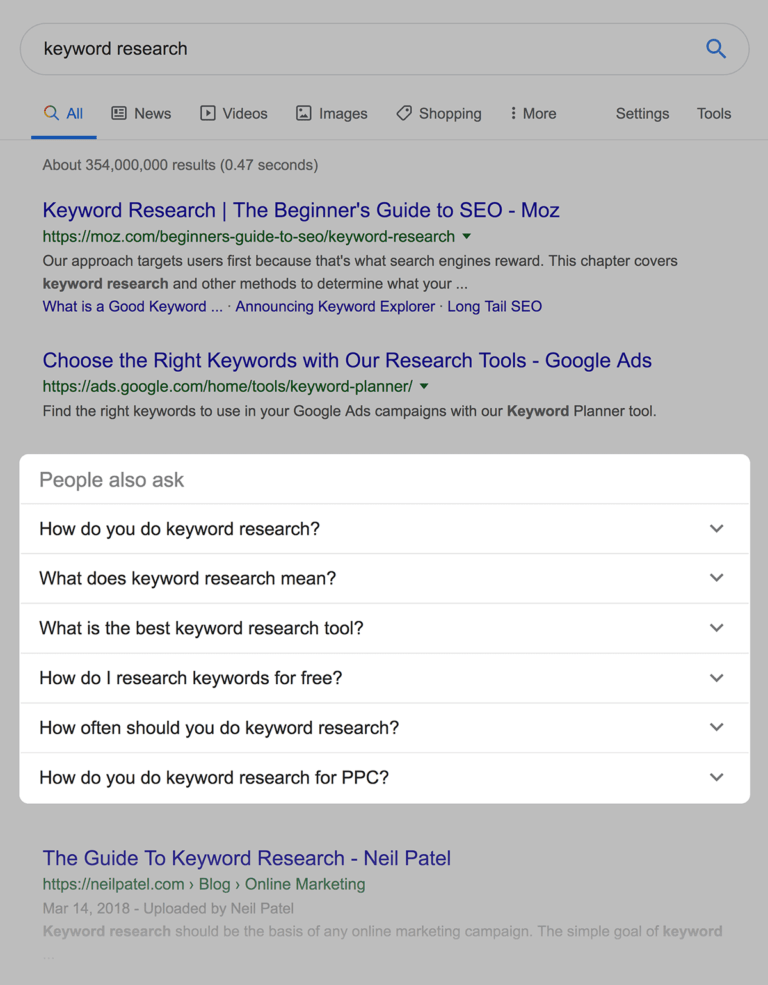
All of these are GREAT questions to answer in the form of blog posts, videos and podcasts.
Twitter Results
Here’s where Google pulls the latest tweets from a specific Twitter account.
For example, when you search for SEMrush, it shows their Twitter account… with links to their last 3 tweets.
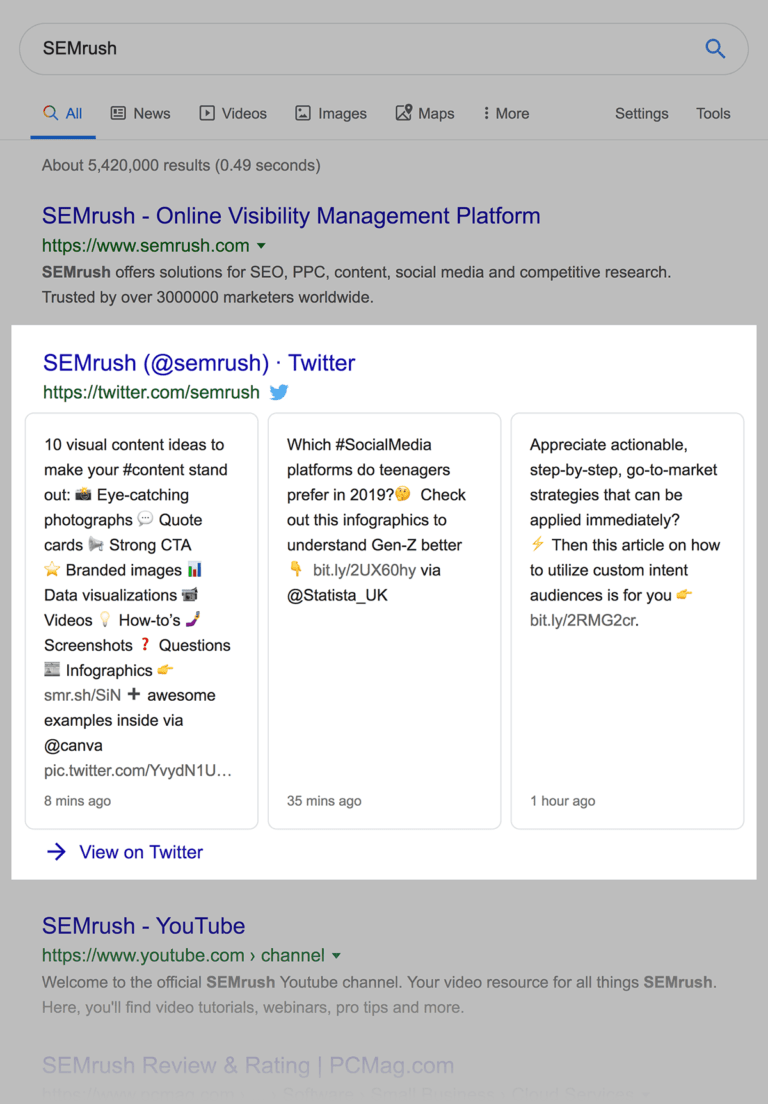
Top Stories
These are links to news articles about a specific topic.
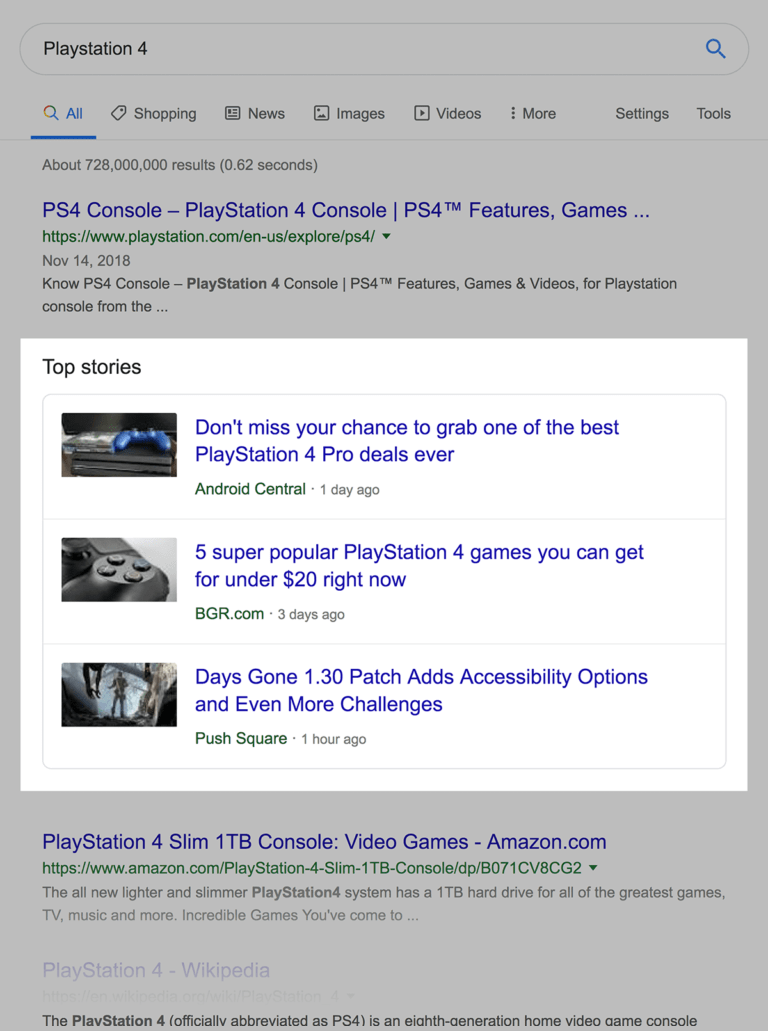
Contrary to popular belief, Top Stories don’t only show up when you search for trending keywords.
For example, take a keyword like “weight loss”. The search volume for this term is pretty stable. Yet, when you search for “Weight Loss”, there is always a Top Stories section in the SERPs.
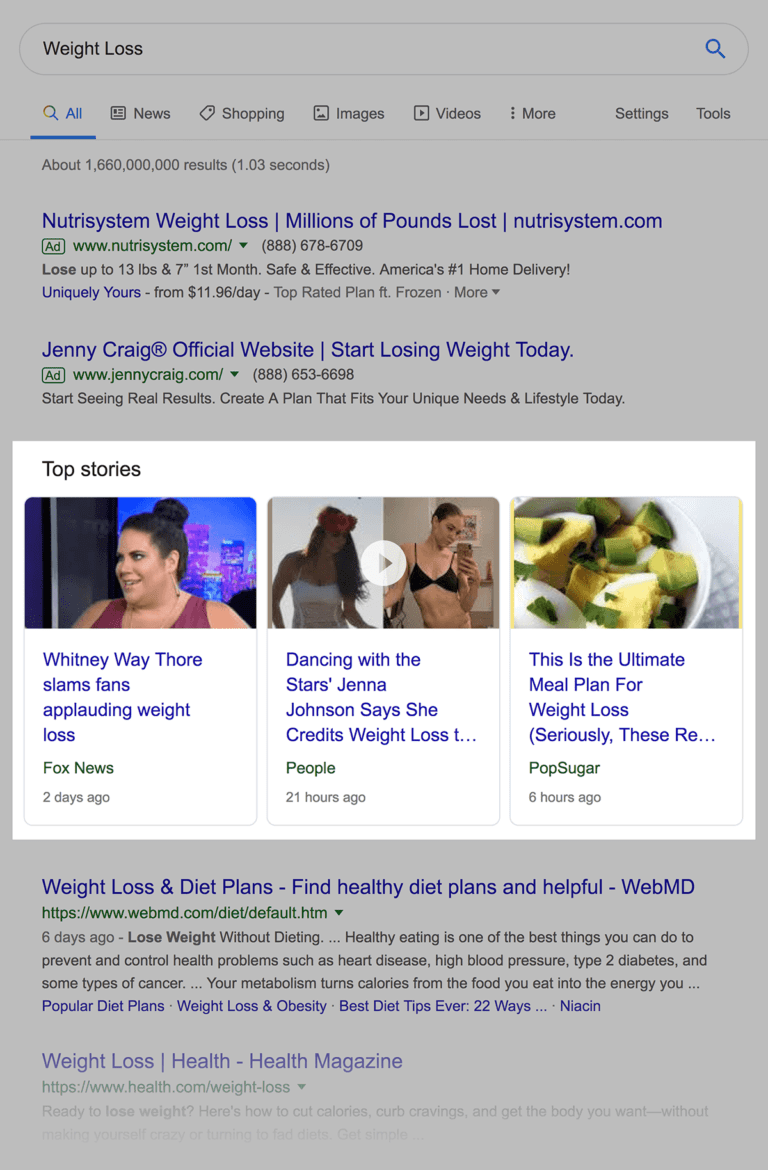
Note: Unlike most of the other SERP features on this list, your site has to be Google News approved to get in the Top Stories section.
Google Shopping Results
Google Shopping Results (also known as “Product Listing Ads”) are results that appear for keywords around a specific product.
Here’s an example:
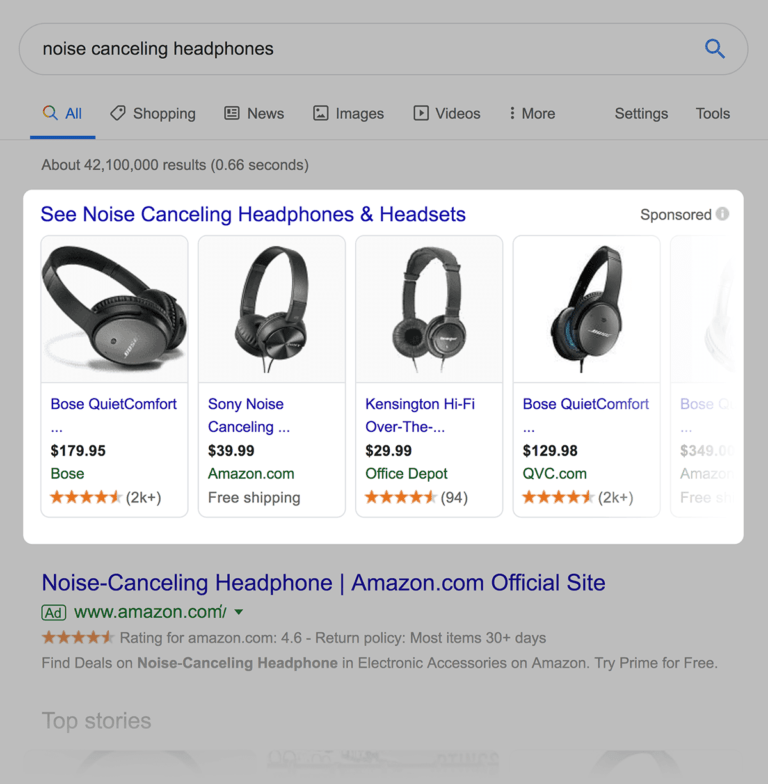
Even though most Google Shopping Results are ads, they feature select organic results too.
Because most Google Shopping Results appear at the very top of the page… even above traditional ads.
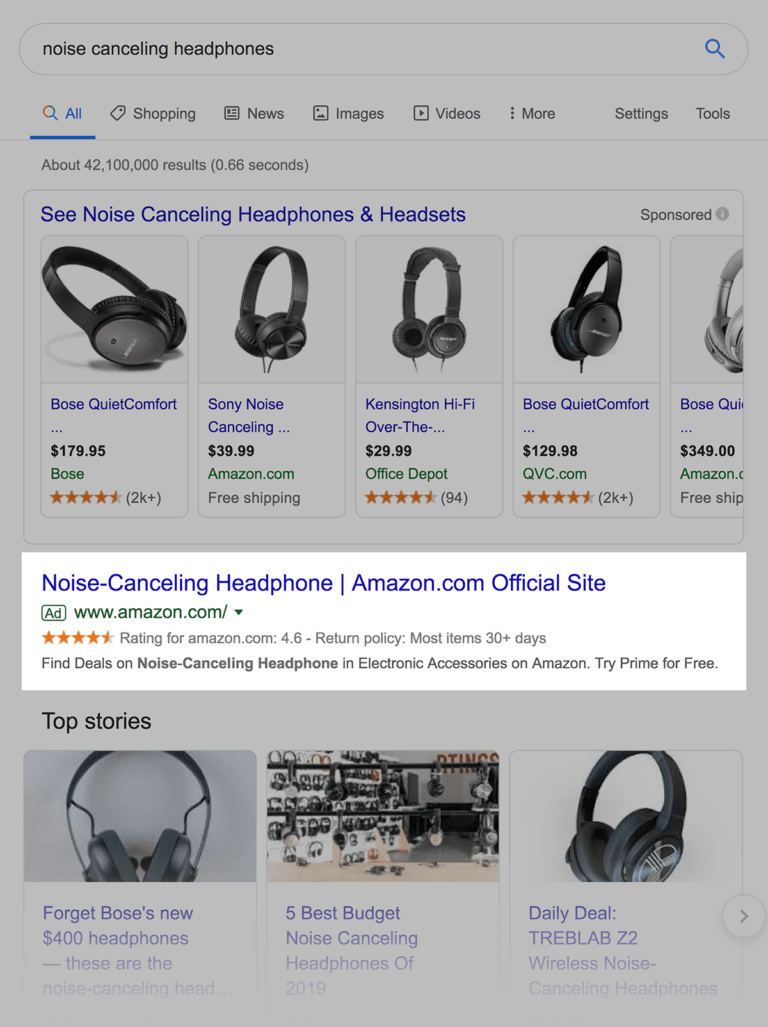
Learn More
How to Appear in Google’s Answer Boxes: A practical and clear video from Moz on getting your site inside of the coveted “#0” Featured Snippet spot.
